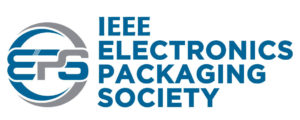Speaker: Timothy Orsley, Senior Research Associate, Corning

Meeting Date: Thursday, October 29, 2020
Time: Checkin via WebEx after 11:50 AM; Presentation at 12:00 noon (PDT)
Cost: none
Reservations: eps2010b.eventbrite.com
Summary: Because ceramic materials are inherently brittle, vias have traditionally been made in the green state prior to sintering. Since the sintering is done by the ceramics vendor (at very high temperature), the onus is upon them to fabricate the vias beforehand, thus making the material custom and costly. This stands in stark contrast to PCB materials which are generic when delivered, being customized instead by the purchaser. Corning’s new ribbon alumina laminate is the first ceramic product that allows for PCB processing — even mechanical drilling. The ribbon alumina essentially supplants the traditional glass weave and, being homogeneous, eliminates differential signal skew. The laminate supports very high speed signaling, such as 5G, with very low loss tangent and dielectric constant. Applicable both as PCB and package substrate: use in PCBs dramatically reduces overall CTE mismatch, while use as a package substrate better distributes stress. This presentation will consider the process flow of traditional ceramics in contrast with Corning’s new ribbon alumina laminate, and provides details on important laminate attributes.

Bio: For the last twelve years, Tim Orsley has done business development for Corning from its technology center in the Bay Area. Prior to that he worked at Agilent/Avago (mice and image sensors) after spending decades in the storage industry (Iomega and Quantum) doing technical marketing and product planning. Tim holds bachelor degrees in Economics and Political Science from UCLA, as well as thirty-six U.S. patents.
